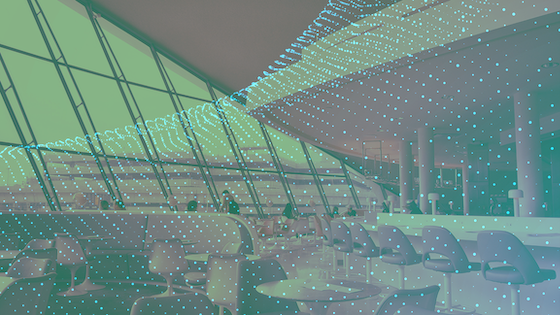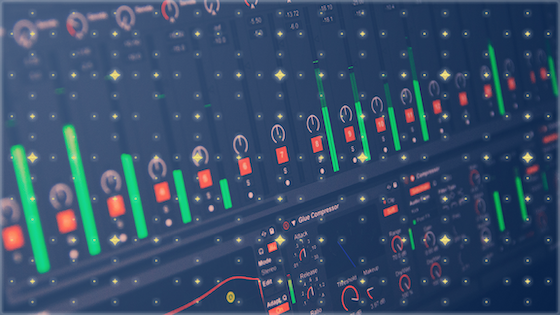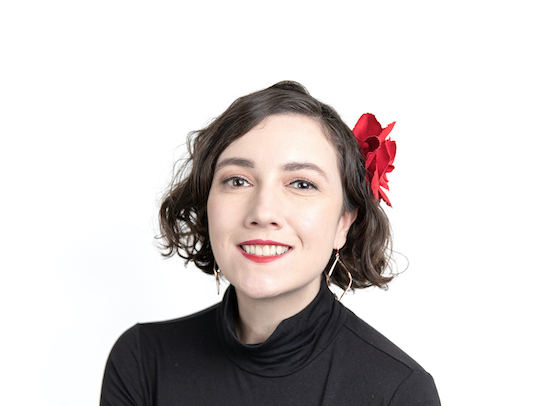One on One with Made Music Studio’s Kristen Lueck

The ambiance of sound in an airport environment could become an important element for the future of travel. Credit: Made Music Studio
Sound has become a secret weapon for modern brands, and this could be especially true for luxury brands, according to the experts at Made Music Studio, a sonic branding and design studio that creates iconic and powerful music-driven experiences.
Sixty-seven million Americans listen to podcasts every month, audio streaming has increased 32% year over year, and 41% of people in the U.S. use voice search every day, reports Kristen Lueck, VP, Director of Business Development and Partnerships at Made Music Studio.
With so many consumers using audio, the number of global companies investing in sonic branding to capture them is increasing exponentially. In 2021, Made Music’s research shows a 22% jump in brands launching audio identities. This phenomenon is happening across industries, from financial services and autos to tech and retail.
So what is sonic branding and why are so many companies tuning in?
The music and sound associated with a brand is telling a story, says Lueck, and this is great news if you carefully curate the audio experience. Sound can create atmosphere, bridge the digital and physical, and build consistency across touchpoints, and this is especially relevant for luxury brands.
“Sonic branding is based on the brand strategy and trajectory of the brand and in that way, every audience we’re speaking to is unique. In the case of luxury, there are some emotional takeaways that we are trying to hit, like building an emotional connection around trustworthiness, timelessness, quality, heritage – that may or may not be present in traditional retailers,” says Lueck. “There’s also a discussion around cacophony in today’s world and how true luxury exists in moments of silence – so knowing when to pull back and where to erase sound and music, is an important part of the luxury discussion.”
One way to control the sound image of your brand is through a sonic logo. The audio equivalent of a visual logo, a sonic logo can refer to a short melody, musical statement, SFX, or tagline – or any combination of those, explains Lueck.
“Sonic logos are generally less than four seconds in length and appear in brand marketing and communication efforts, often heard as a sign-off at the end of commercials. Synonyms include hook, mnemonic, sonic signature or sonic mark,” she tells TMI.
Connecting with consumers
Lueck shares how Made Music has helped some major luxury brands use audio to connect with consumers.
“When Burberry introduced an audio component to their Regent Street flagship store, it raised the bar for using audio in luxury experiences,” she explains. In this case, hundreds of screens and speakers combined to immerse the customers in a runway fashion show across the building – with multimedia and music that changed depending on the accessories that were close to the screen.
Luxury vehicles also use audio, taking care to consider the actual sound environment of their cars, she adds. “From the start of an engine to the shutting of a door – it all plays a role in the sonic theatre of the experience and makes you feel like you’re in something high quality and safe. [Luxury vehicle manufacturers] often have teams of engineers and sound designers on staff for just that reason.”
Opportunities for sonic branding can be found across many venues, says Lueck.
“Some of the most popular ways luxury brands are using audio are in digital and social content – across their social media and YouTube channels, using music and sound to score mini stories and communications, often partnering with popular artists, or using known songs,” she explains.
“Another way to use audio is through mobile apps – having specific user interface sounds that register as “alert”, “favorite”, “confirmed” or whatever the action may be, to let users know their action was meaningful.
“A luxury brand’s guest services or customer call centers are made for audio and getting this touchpoint right can be the difference between a calm client and a more aggravated one. We know that using the right type of music in an on-hold setting, an ambient score with no distinguishable loop, can reduce perceived wait time!” she says.

For over 20 years, Made Music Studio music producers have refined and hosted reference track workshops (like a visual mood board, but
for audio) with clients, to understand the existing brand strategy and how the sound should be developed.
Sound for travel
Sound design would be a big draw for the travel industry, especially luxury travel, says Lueck, citing a sonic identity system that Made Music created for Southwest Airlines with the famous flight attendant call button “ding” in the their marketing and communications, Virgin playing music on-board and not forgetting to pump it into the bathrooms, and W Hotels dayparting their music selection in the lobby from morning to evening to keep you in the right spirit throughout the day.
Made Music Studio has also worked in an airport environment, specifically with the American Express Centurion Lounge in 13 airports across the United States.
“Made Music Studio created a signature, branded sonic ambience meant to welcome cardmembers from the general airport into a highly curated, luxury experience. This 60-minute piece was approached like how we would approach composing an album. We tapped an array of artists to create their own style of ambient tracks and then edited them together into the longer final piece,” says Lueck.
Luxury’s sensory approach
Lueck believes that the luxury market will be headed into an even more bespoke, experiential experience for its audiences, one that takes into consideration even the acoustics of its physical spaces.
“The glass windows of an Apple store transport you somewhere different than the lush carpeting and curtains of a jeweler’s mansion on 5thAvenue,” she points out.
“Storytelling, and how you are involved in the story individually, I think will be a big part of the experience – and all the tastes, smells, sights and sounds that are a part of that. I think luxury brands will be taking a note from location-based entertainment and the immersive qualities of theme parks, museums and other experiential permanent locations.
“They are looking to bring in awe, wonder, and that magic that keeps customers coming back again and again.”
Kristen Lueck is the VP, Director of Business Development and Partnerships at Made Music Studio, building opportunities to unlock the power of sound for entertainment, brands and people. Over the past eight years she has worked on sonic identities, network rebrands and immersive experiences for clients such as AT&T, Nissan, IMAX, Disney, and Southwest Airlines and supported programs that explore how music can improve human wellness. Her entertainment background saw her as Music Assistant to Paul Shaffer at The Late Show with David Letterman and programming and marketing film festivals in several states. She has shared her insights on the stages of TEDx, SXSW, Adobe’s 99U and The Future of Storytelling.










